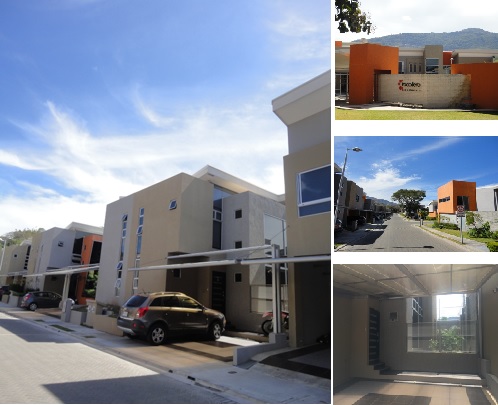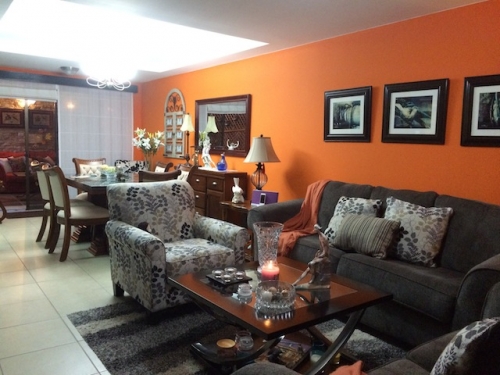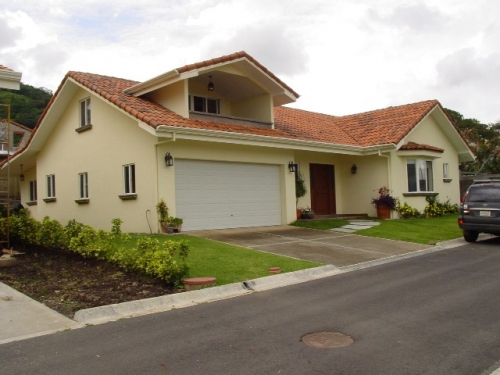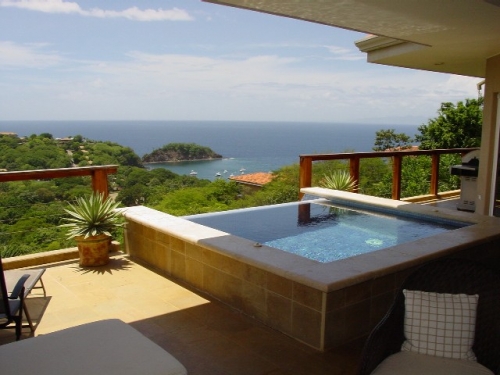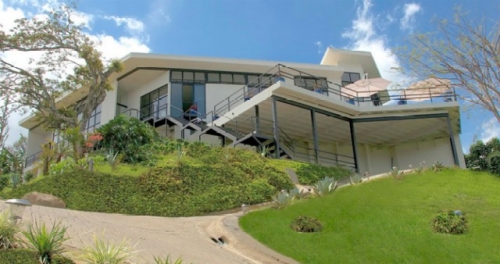Costa Rica Guide
Costa Rica Real Estate
List your property today!
Inclusion of real estate listings at Costa Rica Guide is
absolutely free of charge.
Featured Properties
Costa Rica Guide - Costa Rica Real Estate
Northern Region - Costa Rica Country Profile
With Arenal Volcano as guardian of the surroundings, the flat lowland region that surrounds this colossus is the heartland of Costa Rica.
For over 400 years Arenal Volcano’s forest-covered cone sat alone and silent on the edge of the San Carlos plains, exhibiting only a little fumarole activity in its single, dormant crater. In 1968 it erupted violently without warning, spewing molten rock and ash high into the sky, destroying the village of Pueblo Nuevo, killing 78 people, and forming three new craters.
It has been active ever since with more or less regular eruptions of lava and ash providing fiery demonstrations that draw curious onlookers from all parts of the world. Arenal’s constant activity has covered the two lower craters on the western, rocky slope. Viewed from north or south its two remaining craters appear as twin peaks belching ash and rock.
Rich farming countryside, the flat lowland region that surrounds the majestic Arenal is the heartland of Costa Rica. The volcano towers over lush green pastures, and plantations of papaya and cassava. Rumblings, and occasional explosions, form the backdrop of the lives of these country people-(campesinos) who make their living from raising animals and crops.
Most dramatic at night, the 1,633-meter-high volcano can be seen from many vantage points near La Fortuna, the town in the province of Alajuela that is closest to the volcano, a winding four-hour drive from San Jose.
On clear nights, local couples and families pack a cooler and drive out from town to park their cars by the side of the road to watch the show of lights and fire. While a number of lodges and resorts in the area offer excellent views of the volcano, many visitors prefer to continue on past the hot springs to the national park an unpaved turnoff on the left, which also leads to the private Arenal Observatory. From here it is possible to hike four kilometers through part of the area devastated by the 1968 eruption.
Although at least one La Fortuna-based tour operator offers trips up Arenal, it is not advisable to climb the volcano. One tourist was killed and another burned in July 1988 when they hiked too near the crater. Their foolhardy trip also endangered the lives of the Costa Rican Red Cross, who rescued the body.
For adventure lovers
The area around Arenal Volcano offers a multitude of activities for adventure and nature lovers. Arenal Lake is a popular spot for wind surfers, fishermen and boaters. Fishing and windsurfing tournaments are annual events on this man-made lake created to provide hydroelectric energy. The lake is a 24-mile-long reservoir beginning at the foot of the volcano. The road around the lake-passable, but four-wheel drive recommended-is dotted with lodges and restaurants.
A major attraction has developed on the volcano’s northwestern skirt where a hot river runs. Tabacon Resort has channeled part of the river’s flow into several pools and a manicured tropical garden. This is a magnificent place to swim in a relaxing way to soothe muscles sore from horseback riding or hiking. In the shadow of Arenal while watching giant glowing boulders tumble down its slope.
Venado Caves, north of the lake, offer the adventurous an exciting journey underground. Visitors crawl, wade and climb through this dark, sometimes narrow 1.5-mile system of caves. Further north, near the Nicaragua border, is Caño Negro Wildlife Refuge. The nearly 2000-acre seasonal lake within the park attracts an abundance of waterfowl including roseate spoonbills, wood storks, anhingas and the seriously endangered jabiru stork.
Tourism-based around volcano watching, water sports and nature activities-is booming in the Arenal area, but has stayed on a small, family-owned scale. Active, low-cost sightseeing and adventure activities abound, most within a one-hour drive from the friendly town of La Fortuna. The majority are accessible by four-wheel drive, some by two-wheel drive, and all are daily destinations.
Caño Negro Wildlife Refuge
Caño Negro National Wildlife Refuge is a remote tropical everglade teeming with wildlife. The 9,969-hectare reserve protects a lush lowland basin of soft, knee-deep watery sloughs and marshes, holillo groves, and tan carpets of sturdy sedge. Live here revolves around Lake Caño Negro, a seasonal lake fed by the fresh waters of the Rio Frio, which snake down from the flanks of Volcan Tenorio and collect in this basin, where they slow almost to a standstill.
In the wet season, when the region is flooded and great pools and lagoons form, vast number of migratory waterfowl flock in, turtles, crocodiles, and caimans in abundance bask on the banks, and as you look down into waters as black as Costa Rican coffee you may see the dim forms of big snook, silver-gold tarpon and garish garfish lurking in the shadows. In February, the dry season sets in (it generally lasts through April), Caño Negro dries out, and the area is reduced to shrunken lagoons. Caiman gnash and slosh out pools in the muck, and wildlife congregate in abundance along the watercourses.
Caño Negro is a birdwatcher’s paradise. The reserve protects the largest colony of neotropic cormorants in Costa Rica and the only permanent colony of Nicaraguan grackle. Cattle egrets, wood storks, anhingas (also known as needle duck), roseate spoonbills, and other waterfowl gather in their thousands. The bright pink roseate spoonbill is one of Caño Negro’s most spectacular wading birds. It is named for its spatulate bill, some 15-19 cm long, which it swings from side to side as it munches insects or small shellfish.
Another favorite is the anhinga, a bird as adept underwater as in the air you can see it solo of by the dozen, preening way up in the cypress trees.
The reserve is remarkable, too, for its healthy population and endangered mammal species, including jaguars, cougars, tapirs, ocelots and monkeys playacting. And the crocodile colony of Caño Negro is perhaps the best protected in Costa Rica, though caimans are far more numerous and easily seen.
Caño Negro, as a national refuge, was established in 1984. The climate is warm and humid. As from December 1991, this area was declared Wetlands of International Importance.
Reaching Caño Negro is easy due to the excellent conditions of a well paved road departing from Muelle, a village located between Ciudad Quesada and La Fortuna. From Muelle, the road takes you on an almost straight line to a detour just four miles before reaching Los Chiles. From there, the refuge is located about 8 miles on a gravel but in good shape road. Tours departing from La Fortuna usually offer Caño Negro as a one day tour, however, there is more to see and one day is never enough. If planning to stay longer than one day in Caño Negro, we recommend you to establish contact with Caño Negro Lodge (see ad on this section). This is an Italian owned property with excellent accommodations and services, including expertise guides and boats for fishing or nature contemplation. They can also arrange horseback riding tours and other options to really enjoy this fantastic territory, indeed a must to all visitors to Costa Rica’s Northern Plains. When staying in Caño Negro Lodge ask them for a good Garfish dish, if the fish is not in prohibition by the authorities, they will prepare you a real banquet.
The above information is courtesy of Costa Rica Institute of Tourism (ICT).

